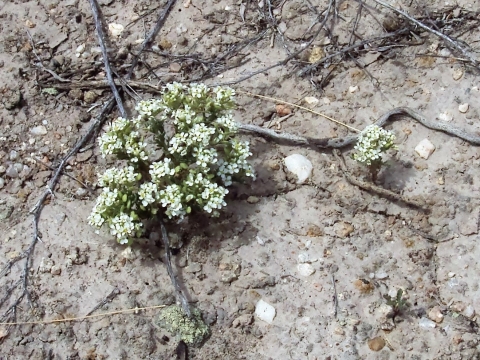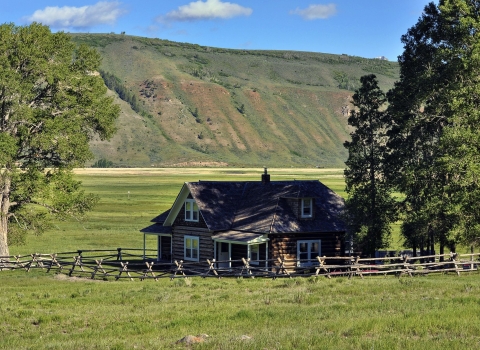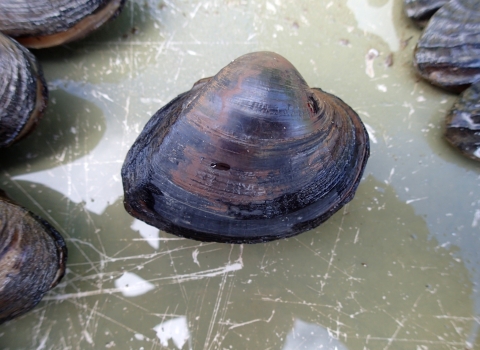BOISE, Idaho – After a thorough review of scientific information and evaluation of public comments received on the proposed rule, the U.S. Fish and Wildlife Service is designating critical habitat for slickspot peppergrass (Lepidium papilliferum). This flowering plant is native to the sagebrush sagebrush
The western United States’ sagebrush country encompasses over 175 million acres of public and private lands. The sagebrush landscape provides many benefits to our rural economies and communities, and it serves as crucial habitat for a diversity of wildlife, including the iconic greater sage-grouse and over 350 other species.
Learn more about sagebrush -steppe ecosystem in portions of six Idaho counties and is found primarily in specialized microsites known as “slick spots.”
“The importance of maintaining quality habitat for slickspot peppergrass cannot be overstated in light of the challenges we’re facing with invasive annual grass species, large-scale wildfires, and climate change climate change
Climate change includes both global warming driven by human-induced emissions of greenhouse gases and the resulting large-scale shifts in weather patterns. Though there have been previous periods of climatic change, since the mid-20th century humans have had an unprecedented impact on Earth's climate system and caused change on a global scale.
Learn more about climate change ,” said Lisa Ellis, State Supervisor of the Service’s Idaho Fish and Wildlife Office. “Our collaborative conservation work with state, federal, and private partners in combatting the threats to the sagebrush-steppe ecosystem and the slickspot peppergrass has been vital.”
The critical habitat for slickspot peppergrass, listed as threatened under the Endangered Species Act, covers approximately 78,009 acres of federal lands across Ada, Elmore, Gem, Payette, and Owyhee counties. State, private, and military lands are not included in this designation.
The critical habitat designation identifies those areas that are essential to the recovery of the species. Critical habitat designations do not affect land ownership or establish a refuge, reserve, preserve or other conservation area conservation area
A conservation area or wildlife management area is a type of national wildlife refuge that consists primarily or entirely of conservation easements on private lands. These conservation easements support private landowner efforts to protect important habitat for fish and wildlife. There are 15 conservation areas and nine wildlife management areas in the National Wildlife Refuge System.
Learn more about conservation area nor does it allow the government or public to access private lands.
The rule will be published in the Federal Register on May 4, 2023. The rule can be found at http://www.regulations.gov by searching Docket No. FWS-R1-ES-2010-0071. For additional information regarding critical habitat and the ESA, click here. For more information about slickspot peppergrass conservation, visit here and here.
The announcement comes as the ESA turns 50 years old in 2023. Throughout the year, the Department of the Interior is celebrating the ESA's importance in preventing imperiled species' extinction, promoting the recovery of wildlife, and conserving the habitats upon which they depend.
Frequently Asked Questions
What is the final critical habitat rule for slickspot peppergrass?
The U.S. Fish and Wildlife Service announced a decision to designate critical habitat to address the habitat needs of a plant native to the sagebrush-steppe ecosystem of southwestern Idaho, the slickspot peppergrass (Lepidium papilliferum). Slickspot peppergrass is listed as threatened under the Endangered Species Act.
The proposed critical habitat designation was published in the Federal Register in 2011 and 2014, and then again as a revised version in 2020 where it received comments from the public. The Service then considered public comments and published the final rule designating critical habitat for the slickspot peppergrass in the Federal Register on May 4, 2023.
What is critical habitat?
The Endangered Species Act defines critical habitat as a specific geographic area(s) that contain features essential to the conservation of a threatened or endangered species and that may require special management and protection.
What is the purpose of critical habitat?
Critical habitat protects areas that are necessary for the conservation of listed species. Federal agencies are required to consult with the Service on actions they carry out, fund, or authorize to ensure their actions will not destroy or adversely modify critical habitat. A critical habitat designation generally does not affect situations that do not involve a federal agency, such as a private landowner undertaking a project that involves no federal funding or permit.
Does this critical habitat designation restrict future development?
No. A critical habitat designation does not necessarily restrict further development. It is a reminder to federal agencies that they must make special efforts to protect habitat features essential for the species.
Does a critical habitat designation affect all activities that occur within the designated area?
No. Only activities that involve a federal permit, license or funding and are likely to destroy or adversely modify the area of critical habitat will be affected. If this is the case, we will work with the federal agency or landowner to amend their project to allow it to proceed without adversely affecting the critical habitat. Therefore, most federal projects are likely to go forward, but some will be modified to minimize effects on critical habitat.
Federal agencies are required to ensure their activities do not adversely modify critical habitat to the point that it will no longer aid in the species’ recovery. In many cases, this level of protection is similar to that already provided to species by the “jeopardy standard.”
Are federal agencies required to consult with the Service outside of critical habitat areas?
Yes, even when there is no critical habitat designation, federal agencies must consult with the Service to ensure any action they carry out, fund, or authorize is not likely to jeopardize the continued existence of a listed species.
How does the Service determine what areas to designate as critical habitat?
Biologists consider physical or biological features needed for life processes and the successful reproduction of the species. These include:
Space for individual and population growth and for normal behavior
Cover or shelter
Food, water, air, light, minerals, or other nutritional or physiological requirements
Sites for breeding and rearing offspring
Habitats that are protected from disturbances or represent a species' historical, geographical, and ecological distributions
Are all the areas within the mapped boundaries considered critical habitat?
No. Critical habitat rules normally exclude developed areas such as buildings, roads, airports, parking lots, piers, and other such facilities that do not contain the physical and biological features required by the species to survive and reproduce.
How much land is being designated as critical habitat?
The designated critical habitat is 78,009 acres. All lands being designated as critical habitat are currently occupied by slickspot peppergrass and contain features that may require special management considerations or protection because they are essential to the conservation of the species.
Who owns the land the Service is designating as critical habitat?
The areas designated as critical habitat include 77,652 acres of U.S. Bureau of Land Management lands and 356 acres of Bureau of Reclamation lands. See the final rule for detailed descriptions of the designated critical habitat units.
What is being done to conserve slickspot peppergrass?
The Service continues to work with our partners to conserve slickspot peppergrass and its sagebrush-steppe habitat. This includes:
Range-wide efforts to maintain and enhance habitat
Reduce the intensity, frequency, and size of wildfires
Minimize loss of habitat associated with wildfire-suppression activities
Minimize habitat loss associated with rehabilitation and restoration techniques
Minimize habitat loss or degradation from off-highway vehicle use
Mitigate the negative effects of military training and other associated activities on military lands
Minimize the impact of ground disturbances caused by livestock penetrating and trampling when soils are saturated
The Service and its partners have also funded research and monitoring projects that are used to inform management decisions for species conservation.
With whom is the Service working to conserve slickspot peppergrass?
The Service is working with the state of Idaho, Bureau of Land Management, Idaho Army National Guard, Mountain Home Air Force Base, universities, municipalities, as well as individuals who hold livestock grazing permits on BLM lands to conserve slickspot peppergrass habitat and address its threats. Additionally, the Service is actively pursuing partnerships with private and municipal landowners to conserve this species.
Did the Service prepare an economic analysis for the designation of slickspot peppergrass critical habitat?
As required by the ESA, the Service previously prepared an analysis of the economic impacts of the critical habitat designation and related factors. The draft economic analysis was made available for public review and comment in 2011. Public comments received in 2011 were used to inform the final economic analysis document completed on March 12, 2012, and we have determined that these costs have not significantly changed since 2012.
A copy of the economic analysis can be found on the regulations.gov webpage: https://www.regulations.gov/document?D=FWS-R1-ES-2010-0071-0062
Where can I get more information on slickspot peppergrass?
The slickspot peppergrass Environmental Conservation Online System webpage at https://ecos.fws.gov/ecp/species/4027.





